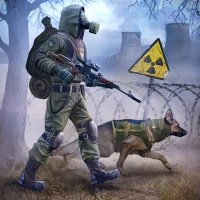
Latest Version
0.2.0
June 06, 2025
Save lives as a firefighter!
Games
iOS
100.7 MB
0
Free
Report a Problem
More About Firefighter Puzzle
Essential Strategies for Effective Firefighting: Ensuring Safety and Efficiency
In the face of raging fires, the primary goal is to save lives and protect property. However, achieving this requires not only bravery but also strategic planning and adequate resources. This article delves into the critical aspects of firefighting, emphasizing the importance of water capacity, hose length, and character upgrades for enhanced firefighting capabilities.
The Importance of Water Capacity in Firefighting
Water is the most vital resource in firefighting. The ability to deliver sufficient water to extinguish flames can mean the difference between life and death. Firefighters must ensure that their equipment is equipped with adequate water capacity to tackle various fire scenarios effectively.
- Understanding Water Supply Sources: Firefighters should be familiar with local water sources, including hydrants, tanks, and natural bodies of water. This knowledge allows for quick access to water during emergencies.
- Maintaining Equipment: Regular maintenance of water tanks and hoses is crucial. Ensuring that all equipment is in optimal condition can prevent delays during critical moments.
- Training and Drills: Conducting regular training sessions helps firefighters understand how to maximize water usage. Drills can simulate various fire scenarios, allowing teams to practice efficient water deployment.
Hose Length: A Critical Factor in Firefighting
The length of hoses used in firefighting operations plays a significant role in the effectiveness of fire suppression efforts. A well-planned hose deployment can enhance accessibility and efficiency.
- Choosing the Right Hose Length: Firefighters must assess the situation to determine the appropriate hose length. Longer hoses can reach distant fires, while shorter hoses are easier to manage in confined spaces.
- Strategic Hose Placement: Proper placement of hoses can facilitate quicker access to water. Firefighters should plan their approach to ensure that hoses are laid out efficiently, minimizing obstacles and maximizing reach.
- Team Coordination: Effective communication among team members is essential when deploying hoses. Coordinated efforts can prevent tangling and ensure that water reaches the fire promptly.
Upgrading Firefighting Skills and Equipment
To combat increasingly complex fire scenarios, firefighters must continually upgrade their skills and equipment. This not only enhances their ability to respond to emergencies but also ensures the safety of both the team and the public.
- Investing in Training Programs: Fire departments should prioritize ongoing training programs that cover the latest firefighting techniques and technologies. This investment pays off in improved response times and effectiveness.
- Utilizing Advanced Equipment: Upgrading to modern firefighting equipment, such as high-capacity pumps and lightweight hoses, can significantly enhance operational efficiency. Firefighters should stay informed about the latest advancements in firefighting technology.
- Encouraging Physical Fitness: Firefighting is a physically demanding profession. Regular fitness training can improve stamina and strength, enabling firefighters to perform their duties more effectively.
Conclusion: A Comprehensive Approach to Firefighting
In conclusion, effective firefighting requires a multifaceted approach that prioritizes water capacity, hose length, and continuous skill upgrades. By ensuring that firefighters are well-equipped and trained, we can enhance their ability to save lives and protect property in the face of devastating fires. Investing in these critical areas not only improves operational efficiency but also fosters a culture of safety and preparedness within the firefighting community.
As we move forward, let us commit to supporting our firefighters with the resources and training they need to combat fires effectively. Together, we can create safer environments for everyone.
Rate the App
User Reviews
Popular Apps










Editor's Choice































